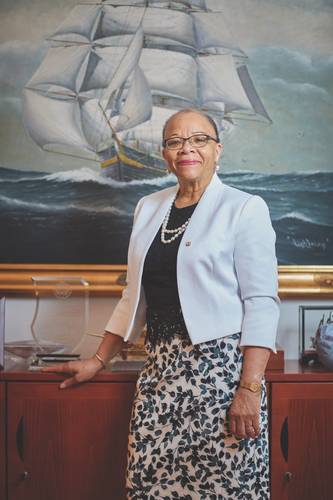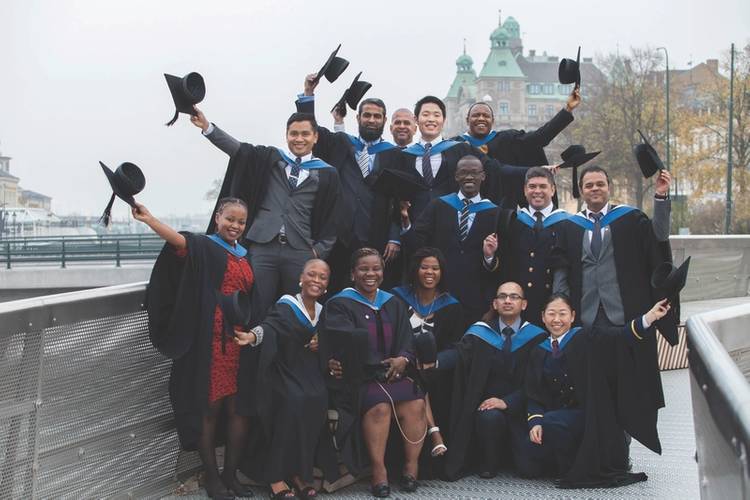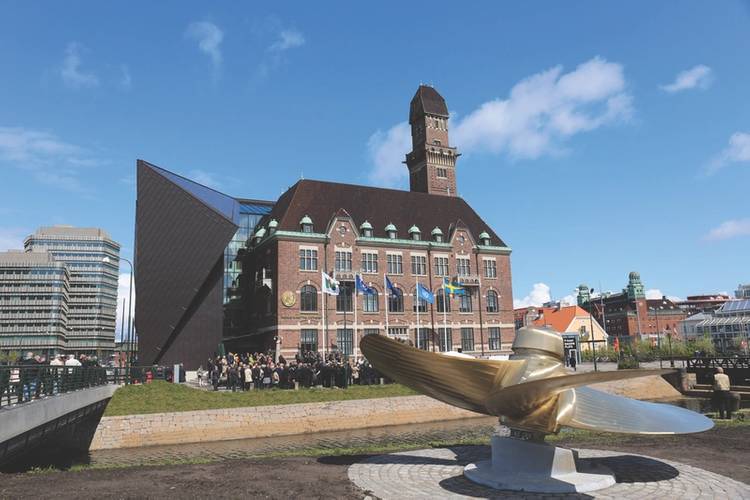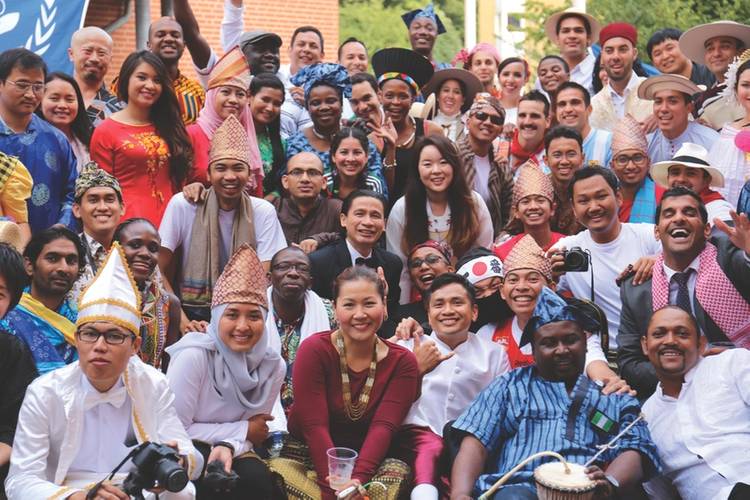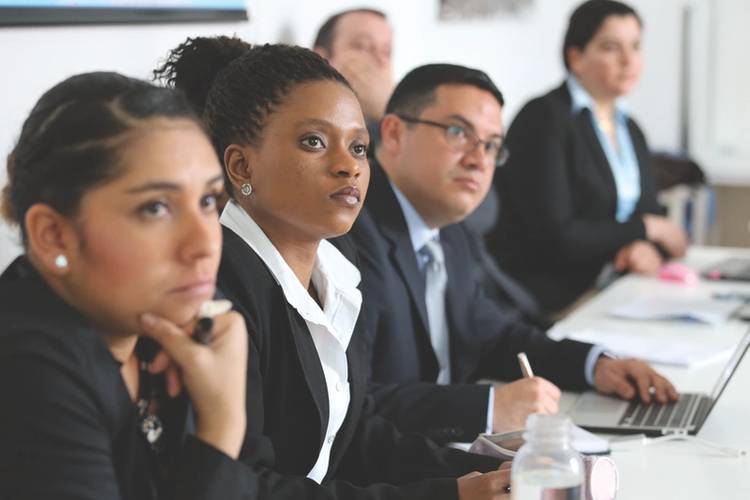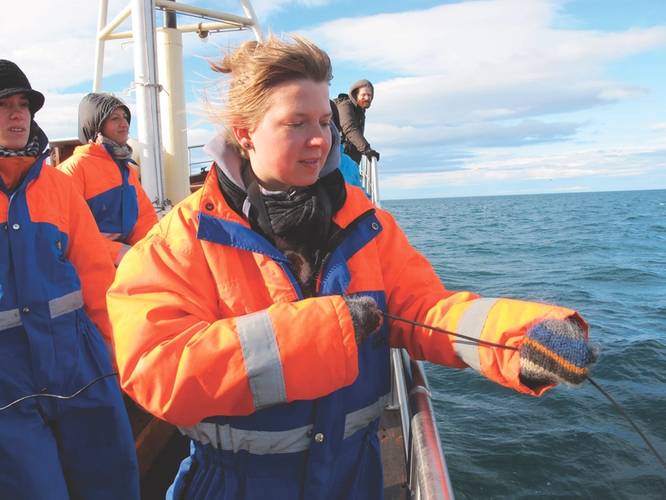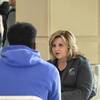To say that Dr. Cleopatra Doumbia-Henry is passionate about all matters surrounding maritime and seafarers is a bit of an understatement. Prior to taking the helm as president of the World Maritime University (WMU) two years ago, she served as the Director of the International Labor Standards Department of the International Labor Office (ILO) in Geneva, Switzerland, responsible for developing the Maritime Labor Convention, 2006. Maritime Reporter & Engineering News was at WMU in Malmö in late June 2017 to sign a Memorandum of Understanding with WMU and Marine Learning Systems to jointly produce a benchmark study on global maritime training practices and trends. Dr. Doumbia-Henry discusses the future course of WMU and the importance of the coming survey.
“I’ve always had a passion for maritime and the shipping environment,” said Dr. Cleopatra Doumbia-Henry, who completed her doctoral thesis on the carriage of dangerous goods by sea “at the time it was a very unusual topic to choose. I was looking at lawmaking by international organizations and the resultant impact.”
The topic, which she admits was a bit esoteric when it was researched and written, was her effort to find a niche to add value to the existing safety at sea discussion of the time. “I thought it could have a significant impact, particularly when you look at the amount of goods carried by sea, and the amount of goods that are considered dangerous,” she said. “It was another way to look at the impact on the oceans, and through this I got to know the International Maritime Organization much better.”
MLC, 2006
Following her studies, Dr. Doumbia-Henry joined the International Labor Organization (ILO) as a commercial lawyer, and courtesy of her maritime background, she became the de facto “maritime” lawyer at ILO. As history suggests, a fortuitous choice by both ILO and Dr. Doumbia-Henry, as she served as the architect of one of the most sweeping instruments to meaningfully impact the seafarers’ work and personal lives – MLC, 2006.
MLC, 2006 was painstakingly built over a period of six years, and before it there were 72 separate instruments – binding ones and non-binding ones– that sought to serve the same purpose. “We had too many instruments that were unevenly ratified and implemented and thus had reduced impact,” she succinctly summarized.
“So I began a major exercise in engaging governments, employers (shipowners) and trade unions (representing seafarers) to look at making this body of international legislation more effective,” she said. This “long haul” started in 2000 and ended with the adoption six years later of a single Convention, MLC, 2006, that effectively replaced 68 international legal instruments.
Dr. Doumbia-Henry is justifiably proud of the effort, not only for what it means to the world’s 1.2 million seafarers, but from the universal buy-in with ratification by 84 countries including all of the major ship registries covering approximately 91 percent of the world’s ships. “This ended up being an incredible enterprise, but one that has been my most rewarding venture. It took a lot of energy, a lot of sleepless nights, but at the end of the day it worked.”
The intensity of the exercise was not only to bring all 68 legal instruments together under one umbrella, but to give it teeth.
“The most important thing was to get ownership, because with ownership everyone feels they are part of the deal and they are going to make it work,” said Dr. Doumbia-Henry. “The idea was to get an instrument that was better, that was more effective and that would have an impact on the working lives of seafarers, making living and working conditions better, give shipowners a level playing field and governments a single set of rules of the game. That was my mission. I had tremendous support, and I’m very proud, as it is one of the best ratified in the shortest timeframe possible of an ILO instrument when you consider its wide-ranging scope.”
The work has paid dividends, and Dr. Doumbia-Henry credits Port State Control as being tremendously effective, citing the Paris MOU as an example in recording 17.4 percent detentions representing 113 ships after the first campaign one year after the entry into force of the Convention.
“This had never happened before in those numbers, because now they had clear identifying factors and targets.” She also referred to the role and the impact of the ILO Committee of Experts on the application of Conventions and Recommendations (Committee of Experts), which is the body that has the mandate at the international level to monitor and evaluate legal and practical implementation by ILO members States of the provisions of ILO Conventions. The Committee of Experts began monitoring compliance with the MLC, 2006 in 2014.
A Return to Academia
Following more than three decades of work, including more than 15 years in senior management positions, Dr. Doumbia-Henry was appointed to lead the World Maritime University (WMU) in 2015. “I thought I had a pretty good set of skills and I think I’m pretty good at managing people.”
In addition, she looked at her experience covering all international labor standards around the world in 187 member States of the ILO, and concluded that these years of experience fit nicely with the mission of the United Nations in building capacity, particularly for developing countries.
Any organization comes with challenges, particularly a high-profile international educational organization, and Dr. Doumbia-Henry sought to first assess both the promise and the peril of the position at WMU.
“I knew one of the challenges of the university was its long-term financial sustainability,” she said, “and that remains for me the number one priority; to help the university strengthen its financial base so it can have a much longer-term perspective than it currently has.”
While WMU is a child of the IMO, it is not funded by the IMO budget; rather it is self-funded. The IMO does contribute financially, but it is not a fixed annual amount. “When you run any business, when you run any institution, one of the main concerns is the money to support operations and building reserves for the rainy days. So before I started I had to determine if I had the energy and capacity to go out and do resource mobilization in a very big way.”
Dr. Doumbia-Henry has spent much of the first two years on the job thoroughly understanding where the university stood. “It’s important to ground yourself before you leap forward. It’s one thing to have a perspective from the outside (of the university), it’s another to really know an organization from the inside,” she said.
One significant step forward and one of the most important achievements in terms of financial stability – with the support of the IMO Secretary General and the Board of Governors of WMU – was establishing an endowment fund. “We have launched the endowment fund, and now we must grow it to ensure the financial stability and future of the university.”
With the endowment fund ‘box checked,’ she is now focused on simultaneously working to energize the WMU alumni association, and preparing for a global launch, a fund-raising ‘road show’ by the end of 2017. Here again she will draw energy for the mission courtesy of her belief in the cause. “I see WMU as charting the course for a better world. Providing the best education and research facilities for post graduate studies and capacity building for a sustainable maritime industry.”
Research is Key
On June 29, 2017 World Maritime University, Marine Learning Systems (MLS) and New Wave Media signed a Memorandum of Understanding to jointly research and produce a comprehensive study on global maritime training trends and attitudes.
“The publication that we just signed off is breaking new ground; I think this is a study that has never been undertaken, it is innovative, it is new,” she said. “Seafaring and shipping is not possible without well-trained, well capacitated crew. Shipping is responsible for 80 percent of world trade; and as I like to say, without it, half of the world would freeze and half of the world would starve.”
“What we signed today is critically important for me because research is a core part of any academic institution,” Dr. Doumbia-Henry continued. “In my view, as an academic institution we have to ‘lift our game’ in the area of maritime research. That’s why an annual, major report that will come out with research findings based on analysis of data is critically important. I want to strengthen WMU’s maritime research. Maritime is our core, and we should be ‘number one’ in the world for maritime research. We need to have annual reports – this one is our first – and we have to be the independent arm providing research, outcomes and results and data that is independently assessed and available to the maritime community in the broadest sense.
Central to the evolution of maritime training is the technological evolution of ships at sea; both regulation-driven to meet ever tightening environmental standards and market-driven to improve safety and efficiency. As maritime moves increasingly toward automation, there are also fundamental questions regarding the future role of the seafarer; where will they come from; where will they work; when and where will they train?
Dr. Doumbia-Henry sees the impact of the internet and eLearning as transformational to all training and education, and one that is quickly spreading through maritime circles.
“So much now can be done through eLearning platforms, and now it is impacting the maritime industry,” said Dr. Doumbia-Henry. “I think face-to-face and practical onboard training – while they will still be indispensible – will be balanced with training people to learn through eLearning platforms, so seafarers, at sea, can continue their education.”
To truly understand the pace and direction of change, more information is needed on the training habits, objectives and future plans of the companies training seafarers. “I think the survey will enable us to, first, establish a base-line; To achieve something that is objective, independent, and a comprehensive analysis of data relating to training policy and practices,” said Dr. Doumbia-Henry. “For me, the outcome of this annual study will enable the maritime industry to gain insights that can assist with policy making, with decision making, with benchmarking, as well as to help optimize operations and potentially influence the international regulatory regime. We need to make sure the international regulatory framework are adapting to rapidly changing technologies.”
Ultimately, well trained seafarers will support – in a very fundamental way – sustainable, safe and secure shipping on clean oceans.
“In my view that is critical to the long-term sustainability of the industry itself. And on the future of maritime, seafarers, the oceans and the WMU, Dr. Doumbia-Henry is passionate indeed.










